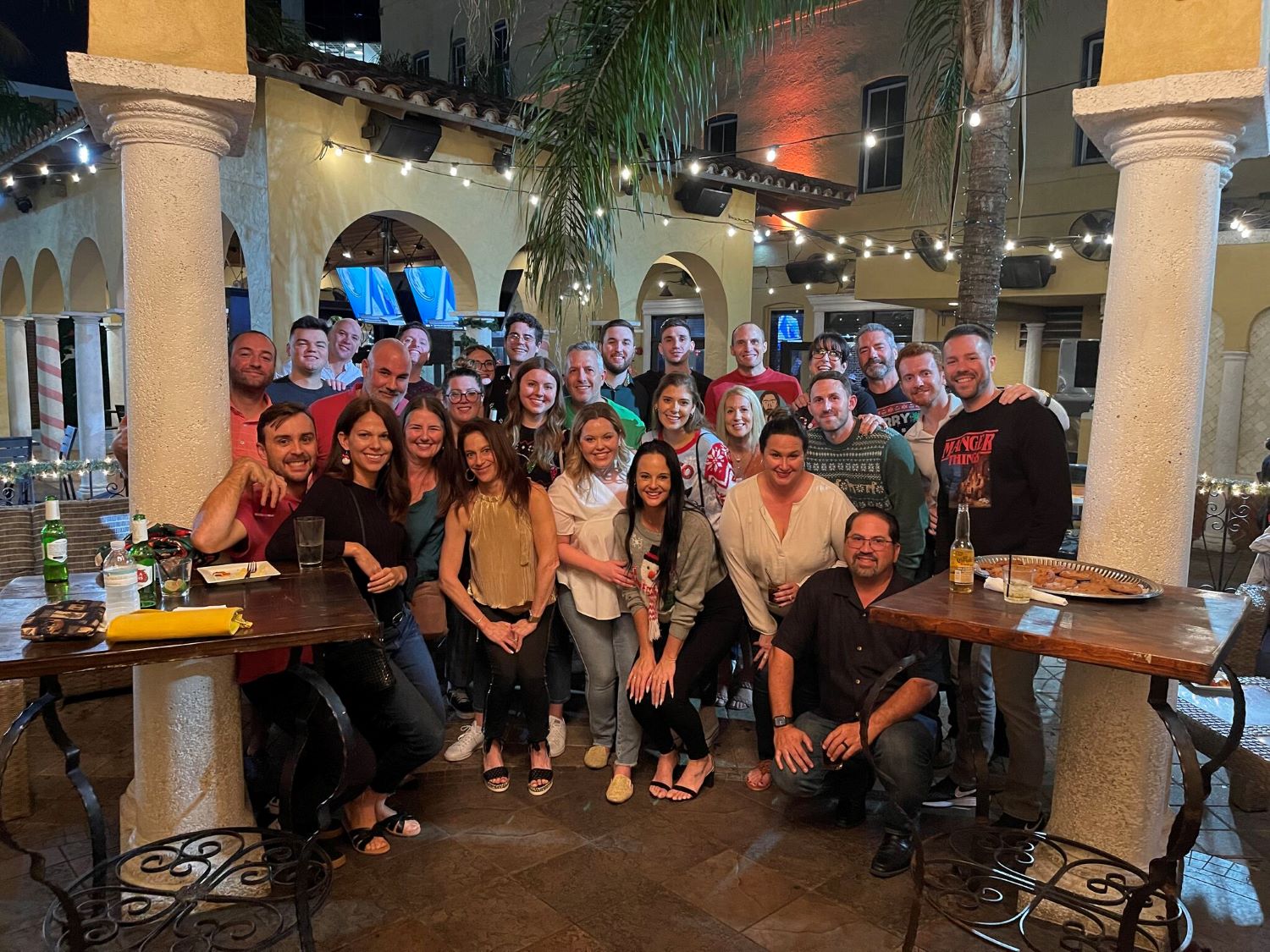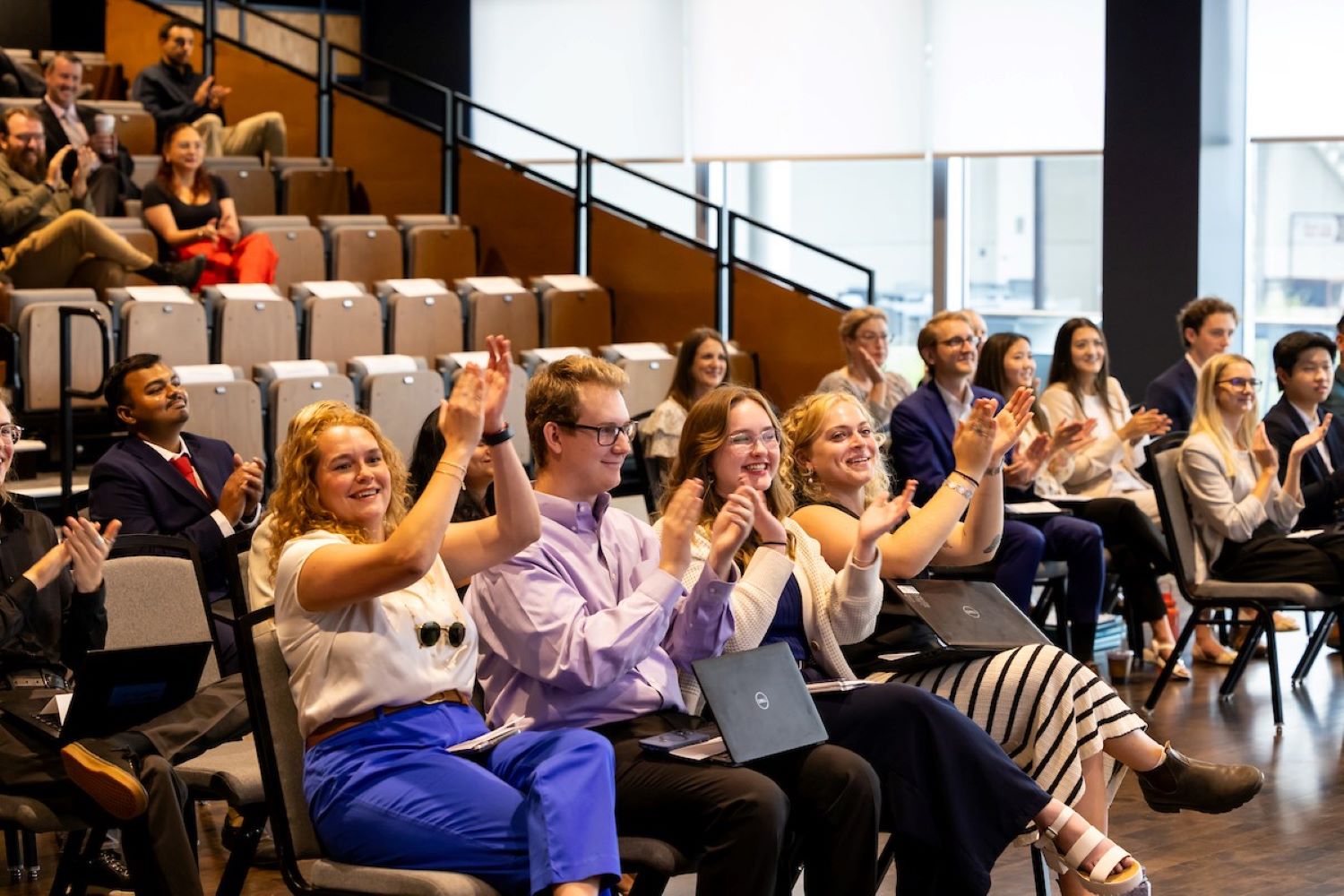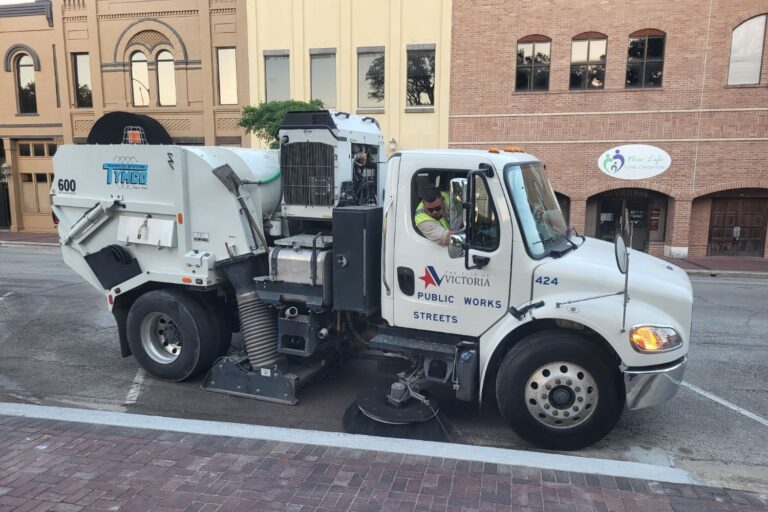How Government Contractors Can Attract Top Talent – Tips from Noel Tiell
Recruiting challenges have long been a norm for government contractors. The frustration of having a subcontractor back out at the last minute is all too familiar, and unfortunately, it’s a recurring issue.
When branching out into the contracting world, many people are just starting to learn how to be entrepreneurs. There are many things to learn, especially when it comes to working with people. To avoid the undesirable scenario mentioned above, having a recruiting strategy is super vital.
Noel Tiell, Director of Permanent Placement at Robert Half, is here to help. With 18 and a half years of experience at the largest specialized staffing firm in the world, he has encountered numerous recruiting problems and developed a set of insights that can assist government contractors in overcoming these challenges.
In a podcast episode with host Kizzy Parks, they discussed and identified common mistakes and solutions for building a dream team. Let’s dive in!
3 Common Recruiting Mistakes Often Made by Government Contractors
According to Noel Tiell, government contractors often make three key mistakes when hiring people.
GovCon Employers Don’t Understand Their Own Needs
As shared by Noel Tiell, small businesses are constantly changing and adapting, which makes it difficult to pinpoint the exact skills they need at any given time. This rapid evolution can lead to uncertainty about the specific qualifications required for new hires.
“When we’re talking small businesses and small entrepreneurs, they’re moving, they’re shaking, their businesses are evolving—it’s like steering a ship and doing a 180-degree turn every other day. In those particular cases, I think the number one hardest thing for entrepreneurs and small business owners is truly understanding the skill set they need,” he emphasized.

Entrepreneurs might think they need to fill a specific void when a problem arises, but this initial assessment might not accurately reflect the true skills needed. It’s important to carefully evaluate and understand the actual requirements of the role.
“That’s a really hard thing because you might have a vision of what it might be when a problem comes up, and you think, ‘Oh, we need to fill that void,’ but that’s not always the true identity of what you’re looking for or what you actually need,” Noel explained.
Instead of focusing solely on specific technical skills (like knowing SAP or a particular industry), it can be more beneficial to hire smart, adaptable individuals who are eager to learn and grow. These candidates can often bring more value by being flexible and quickly getting up to speed with new challenges.
“Sometimes, you just need a really smart person who’s willing to dive in, learn, and get up to speed,” Noel stated.
You Don’t Look Friendly to the Candidates
The second problem, according to Noel Tiell, is that employers—especially government contractors—often can’t provide a positive experience for candidates during the hiring process. This can lead to a neglect of basic courtesies that are crucial for making a positive impression.
He said, “The second thing, and this is probably paramount across all size companies, especially small businesses, is the attraction of candidates. It’s amazing how much I have seen over 19 years that people who own businesses forget that they were candidates once too. When they were candidates, the things that would upset them included not being treated nicely in the interview, not feeling welcome when they went to the interview, not getting a tour of the facility, or the hiring manager being 15 minutes late and not apologizing.”
Treating candidates with respect and consideration is essential, as it reflects the company’s values and culture. Simple acts of kindness and professionalism, such as being punctual, welcoming, and respectful, can significantly impact a candidate’s perception of the company.
“Simple, human, basic attraction points are lost on so many companies, and it really turns the candidate pool off to what could have ultimately been a very good fit,” Noel suggested.
You Don’t Build the Culture Within Your Company
Noel Tiell suggests that many companies either don’t have a well-defined culture or fail to effectively showcase their culture to potential candidates. While the specific job role itself may or may not be fulfilling for a candidate, the overall satisfaction and experience of working at the company will be the deciding factor in whether they choose to stay.
He stated, “People spend more time with their coworkers than they do with their families, especially when you take away the time spent sleeping. If the culture doesn’t fit their personality or align with what they want to do for nine hours a day—whether it’s camaraderie, interaction, team lunches a couple of days a week, team-building events, or collaborative work meetings—it won’t be a good match.”
He also advised others, “There are so many factors that are beyond just the job responsibilities that I think a lot of businesses forget to show, especially if it’s in a good light, that they actually have this kind of culture—show it off.”
Kizzy Parks added to his point, saying that many small businesses and entrepreneurs felt they couldn’t compete with big, well-known companies like Google or SpaceX when it came to showcasing their culture or unique aspects. They might have assumed that because they weren’t as large or famous, they didn’t have anything special to offer. However, Kizzy encouraged these businesses to recognize and highlight their own unique qualities.
Tips for Crafting an Effective Recruiting Strategy
After addressing the mistakes, Noel and Kizzy introduced several key elements to develop an effective talent recruitment strategy. The first thing they advised people to do is not to be desperate.
Employers, You Can’t Be Desperate!
Kizzy stressed that desperation was a dangerous mindset for both employers and job seekers. She warned that hiring out of sheer urgency could lead to issues like financial problems, lawsuits, or other avoidable complications.
She explained, “You don’t just need anybody. Because then it could easily get into situations involving money, pending lawsuits, or other things that could have been avoided by just not being so desperate.”

According to Noel Tiell, if you are in a rush to fulfill talent needs, you may hire people who just want money but have no intention of contributing to the job.
“You know, you have two different types of candidates. You have the candidate who is unemployed, who needs to get money, who has to find some sustenance to pay their bills, and they will take the first thing that is offered to them at the right dollar amount. Sometimes that works out, and sometimes it doesn’t,” he said.
You Have to Know You’ll Be Working With
The fact is interviews can sometimes be misleading because candidates often present a polished version of themselves, showing only what they think the employer wants to see or hear.
As explained by Noel, “I’m sure you’ve had a lot of experience where you’ve hired somebody, you think with one interview they’re phenomenal, and then three weeks later you’re like, ‘Oh, I didn’t see that person.’ That person was not who I interviewed. People put on good faces for interviews; people will show you what you want to hear or tell you what you want to hear, show you what you want to see.”
That’s why he recommended taking a promising candidate out to lunch or dinner after the initial interview to get to know them better in a more relaxed setting. By doing so, you might see a different side of the person—either confirming your positive impression or revealing concerns that weren’t apparent in the interview.
“Once you identify a really good candidate, take them to lunch, take them to dinner, get to know the person, let them put their guard down,” he suggested.
In professional settings, some people may use social situations, like a dinner with alcohol, to gauge a candidate’s behavior and self-control. The goal is to see if the person can handle themselves responsibly or if they lose composure.
Even so, Noel thinks that these “testing” situations don’t have to be extreme—something as simple as a casual coffee meeting can offer valuable insight. The goal is that getting to know someone outside of a formal interview setting is important.
“You spend more time with them than you do with your family at home, so you better find a way to work well together,” Noel said.
Beyond Talent, Personality is Also Key
Noel has shared that when framing a job description, it’s important to go beyond just listing the required skills and responsibilities. Regarding his point of view, it’s crucial to consider the personality traits, work ethic, and how a candidate will fit into the company culture.
To define your own personality frame, he suggests deciding what kind of people that you need in your company.
“I think that there’s a part of job recruiting and bringing people in that is so not thought about enough. Like, what would you want as an entrepreneur? Is it someone who’s more yin and yang to you? Somebody who pulls you in when you’re going crazy and trying to do too much. Everybody has that person who probably will be the right type of running mate, whether it’s your right hand or if it’s a culture you’ve built,” he said.
He further explained, “If the team is all interactive, an introvert is probably not going to play well, especially if you need them to be very team-oriented and collaborative. Or if you need somebody who just goes and crunches out invoices all day long and never picks their head up, then get a seat in the corner and get somebody who loves that and doesn’t want to talk to anyone, just puts their headphones in. It’s really important to understand some of the nuances beyond the talent piece. The talent piece is the easiest part—we call that the science. It’s the art of recruiting that everybody screws up.”
According to Kizzy Parks, it’s important to understanding and accepting different work styles within a team. As business owners, it’s our responsibility to provide the right environment and support for employees to succeed and meet their goals, even if those goals and work preferences differ from our own.
“We own the company, it’s on us to provide for them, and they’re helping us accomplish our goals. So, we, in turn, need to help accomplish their goals. If someone really likes to be able to work the way they want to work, and they’ve expressed what their goals and desires are, then by all means, go for it,” she highlighted.
Build Your Company Image on Recruiting Platforms
According to Noel Tiell, Bringing in great talent is just like landing new customers. Whether it’s through your website, LinkedIn, Indeed, or Glassdoor, how you present your company really matters. You want candidates to know that you’re the best place to work, what sets you apart from competitors, and why your people stay.
“These are the things that are so coexistent in both the going out and getting more business and going out and attracting candidates to come work for you. I think sometimes companies spend so much time acquiring business that they forget it’s the same process to find talent,” Noel firmly believes.
Having a LinkedIn profile is essential for anyone looking to be recruited, as it serves as a “beacon” that allows recruiters, small business owners, and companies to easily find and connect with potential candidates.
He also mentions the importance for businesses to have a strong LinkedIn presence, where they can share insights into their company culture, such as volunteer activities or team events, to differentiate themselves from competitors.
Kizzy Parks also agreed with Noel’s point on building social image. She said that while job descriptions were important, they were just one part of the equation. What mattered just as much, if not more, was how a company presented itself online. If the website or the page on a recruiting platform looked unprofessional or questionable, potential candidates might immediately assume it was a scam, even if everything was legitimate.
“Despite having all the right materials, people are still on alert because we live in a society where scams are profiled,” she stated.
Being Transparent and Honest While Seeking Talents on Recruiting Platforms

Often, candidates are bombarded with messages from hundreds of recruiters on those recruiting platforms. To differentiate himself, he takes a transparent approach by being upfront about the client he’s working for and why he’s reaching out. Instead of making vague or generic pitches, he tells candidates exactly who he’s working with and why he thinks they’re a good fit for the opportunity.
Noel shared, “One of the ways I do this is by being upfront about which client I’m working for. I don’t hide anything—I’m not trying to waste your time. I specifically tell them, ‘I’ve been engaged by a client to find you, Mr. Candidate, Mrs. Candidate.’ Based on your profile and what I can see on the periphery, it looks like it could be a really important conversation.”
This honesty and transparency often leads to positive responses because candidates appreciate not having their time wasted.
He stated, “Let’s face it, most recruiters are just hitting quotas or reaching out because it’s part of their job. But I don’t want to waste anyone’s time, and I definitely don’t want them wasting mine.”
Universities Can Be Great Places for Finding Fresh Talent
Besides recruiting platforms or staffing agencies, Noel says that there are many other ways to find employee.
One effective method is to tap into the resources offered by universities. Many schools have outplacement programs that assist businesses in connecting with potential candidates, including graduates, students in graduate programs, or even working professionals who are finishing their degrees. These programs can be a valuable resource for identifying talent, and they’re often eager to collaborate with businesses to help connect students with job opportunities.
“The schools can also play a great role in helping identify talent for you,” he said.
Job Fairs Aren’t the Most Effective Way to Find the Right Candidates
When it comes to seeking new talent, recruiters tend to go to job fairs. While there are many people show up at these fairs, Noel argues that job fairs aren’t the best way to find the right candidates because the likelihood of stumbling upon someone with the exact skills and fit for your company is pretty low.
That “perfect match” moment—where you meet a candidate who’s exactly what you’re looking for—is rare. Instead, he recommends business owners and hiring managers focus on attending more specific networking events that cater to the type of talent they need.
“Instead of the job fair, go to a networking event within the specifications of what you’re interested in attracting. Right? Like, if you need software development people, go to a local software development networking event, right, and talk about your company,” he explained.

The key is, as shared by him, when attending these events, it’s important to actively engage with others rather than just being a passive observer.
“But the key to success is you have to put yourself out there. You can’t go to these events and sit in the corner, have a drink, and people-watch—that won’t get you anywhere. So, if you’re going to go there, have your business cards, your digital business card, your paper, and go shake some hands and talk to some people,” he said.
Sometimes the Best Referrals Come from Your Own Employees
There’s more from Noel about the ways to find new people for your company, one of the best sources for finding new talent can be your own employees. When employees refer candidates, they’re often doing the work of identifying potential hires while also promoting the positive aspects of your company, such as the culture and work environment.
Noel said, “Depending on the size of your team, the best referrals often come from your own employees. Incentivize them to bring talent to the company. If they’re putting in the effort to search for people or talk to others, they’re promoting the positive aspects of the work environment and culture, which helps attract like-minded individuals.
He also mentioned, “This increases the chances of finding candidates who align with the company’s values and needs. Involving employees in the recruitment process can lead to successful hires, especially for critical roles or positions that are difficult to fill.”
It Also Has to Be Exciting for the Candidate
One of the first things you must do to attract top talent is create an exciting workplace atmosphere that makes your people feel like they are truly able to contribute.
If all you’re offering is a repetitive, routine job that doesn’t allow for personal or professional growth, you’re less likely to attract talented individuals who are looking for something more engaging and fulfilling. Essentially, the job should offer more than just the ability to perform tasks—it should inspire enthusiasm and offer opportunities for growth.
Noel stated “I think a lot of small businesses don’t really think about the fact that it also has to be exciting for the candidate. They need to want to learn and grow. There’s a human element on the other side where they want to wake up every morning excited to figure things out, learn, develop, and grow for themselves. It’s not just about placing a cookie-cutter purchasing person who knows a specific software and always buys the same component parts. Sure, they could do that in their sleep, but is that really going to attract them to join your company if you’re not offering anything else?”









